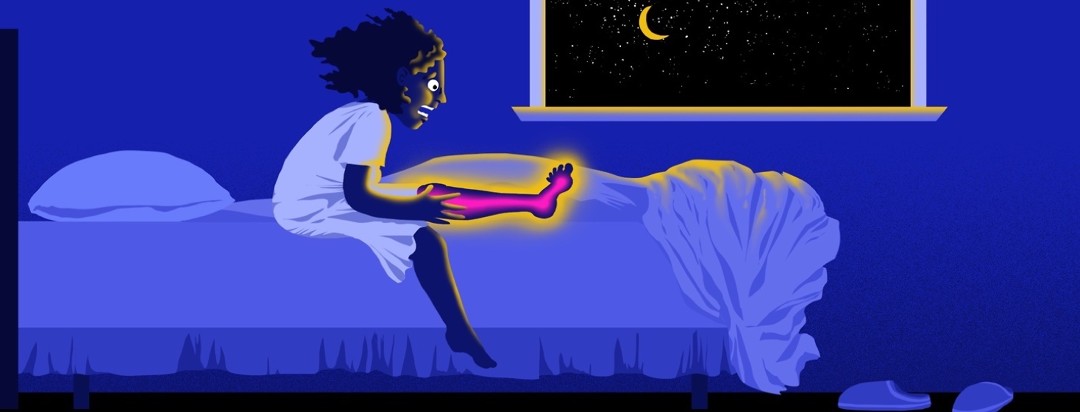What to Know About RLS Mimics
Restless legs syndrome (RLS) is a disorder that can be confusing and often frustrating. It is defined by uncomfortable feelings in the legs while resting. These feelings are only relieved by moving around, and they are often worse at night.1
There is no test to prove that someone’s symptoms are RLS. Your doctor relies on your experiences and story to make the diagnosis. However, there are many other conditions that look very similar to RLS. Each has a slightly different cause and may be treated differently. These conditions include:2
- Nocturnal leg cramps
- Akathisia
- Neurological conditions
Nocturnal leg cramps
A leg cramp that happens during sleep, sometimes called a “charley horse,” is very common. They are often painful and will wake you from sleep. They are caused by muscle spasms in a particular area of the leg, like the foot or calf. They are more common when you are dehydrated or after vigorous exercise. Walking around or massaging the muscle will relieve the spasm.2
However, unlike RLS, muscle cramps do not involve restlessness. Once the muscle relaxes, the discomfort goes away. The need to move around will also go away. While muscle cramps affect one area of one leg, RLS affects the entirety of both legs.2
Akathisia
Akathisia can be a side effect of certain psychiatric medications that are often used to treat depression or agitation. It is restlessness that affects your whole body and may feel like your muscles are quivering. Once these medications are stopped, the sensation usually goes away. The restlessness may be more noticeable at night but it can happen at any time of day. RLS is very similar to akathisia, but it is not caused by medication and will improve when you move around.2
Neurological conditions
Nerve damage or injury can cause painful or uncomfortable sensations that are worse at night and can make it difficult to sleep. This includes conditions like arthritis and radiculopathy. Arthritis is swelling and pain in your joints. Radiculopathy is pain, numbness, or tingling in a particular area of the body. It often happens in the neck or lower back.1
Diabetes can also cause nerve damage called peripheral neuropathy. This results in numbness or a tingling sensation, often in the feet or legs. This may feel similar to RLS, but it is not improved with movement. Similar tingling and discomfort can be caused by certain vitamin deficiencies or conditions like kidney failure and lupus.2
How can I tell if my symptoms are RLS or something else?
If you are not sure if your symptoms are RLS, here are some other criteria that may help you narrow it down:3
- RLS symptoms do not go away. A small change in position will not relieve your symptoms. Though walking around may help, they return when you lay down again.
- RLS symptoms occur when you lay down to rest or sleep. They do not depend on the position you are resting in.
- RLS is closely related to trouble sleeping. Often, those living with RLS connect their symptoms to their difficulty sleeping.
If you think you may have RLS or one of these conditions, talk to your doctor.

Join the conversation